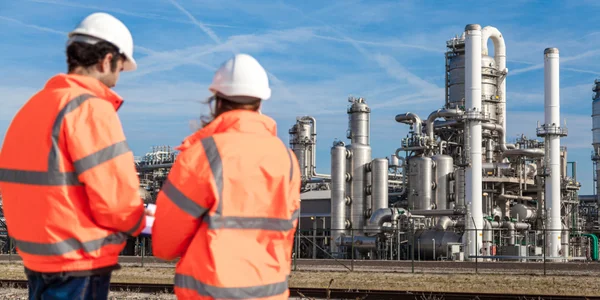Pengumpul Debu Multi Siklon
- Presipitasi Elektrostatik
- Rumah Kantong Udara Terbalik
- Filter kain
- Filter elektro hibrida
- Desulfurisasi Gas Buang
- Pendingin aliran paksa
- Penggosok
- Pabrik pembersih gas
- Siklon
- Klon multi
- VOC + Sistem penghilang bau
- Sistem ekstraksi debu
- Sistem ekstraksi asap
- Perangkat perlindungan ledakan
- Kipas dan blower
- Pengolahan air limbah
- Penukar Panas Udara ke Udara
Kantor
KANTOR PUSAT

Jerman
-
Filter Intensif Himenviro Technologies GmbH
Neustraße 45 - 49, 42553, Velbert, Jerman/Jerman - +49 20534200990
KANTOR WILAYAH

Britania Raya
-
Filter Intensif Himenviro UK Limited
47, Bath Street WS13BX, Wallsall West Midlands, Inggris Raya - +44 1922 628893
KANTOR WILAYAH

Uni Emirat Arab
-
Filter Intensif Himenviro Technologies FZE – LLC
Pusat Bisnis, Zona Bebas Kota Penerbitan Sharjah, Sharjah, UEA - +971-556074697
KANTOR WILAYAH

India
-
Filter Intensif Himenviro Private Limited
D-247/11, Sektor-63, Noida - 201301, Uttar Pradesh, India - +91-120-4642-500
KANTOR WILAYAH




India
-
Filter Intensif Himenviro Private Limited
D-247/11, Sektor-63, Noida - 201301, Uttar Pradesh, India - +91-120-4642-500
KANTOR WILAYAH




India
-
Filter Intensif Himenviro Private Limited
D-247/11, Sektor-63, Noida - 201301, Uttar Pradesh, India - +91-120-4642-500
Sistem Pengumpul Debu Multi-Klon untuk Industri
Setelah siklon, sistem pengumpulan debu multi-klon adalah pengumpul debu mekanis. Di dalam ruang, terdapat sejumlah tabung siklon paralel yang memisahkan partikel debu berat dari aliran udara. Ini berfungsi sebagai penangkap percikan utama dalam beberapa aplikasi serta pemisah utama untuk mengurangi beban debu pada filter kantong atau pengumpul debu.
Tabung pengumpul dari besi cor yang digunakan dalam kolektor debu Multi clone bertahan lebih lama daripada tabung yang terbuat dari bahan lain. Untuk aplikasi yang melibatkan suhu tinggi atau erosi yang signifikan, tabung pengumpul dan bilah paduan khusus ditawarkan.
Fitur Sistem Pengumpul Debu Multi-Klon Kami
- Tidak Ada Bagian yang Bergerak atau Berputar sehingga Tidak Perlu Perawatan
- Desain Tabung Berbeda Untuk Aplikasi Berbeda
- Pengalaman Komprehensif dalam Pemilihan Produk
- Penurunan Tekanan Operasional Rendah
- Tabung Paduan Cor/Fabrikasi yang Dapat Diganti untuk membentuk Multiklon
- Blower sentrifugal masuk memberikan efek siklon maksimum
- Konstruksi tugas berat
- Efisiensi pemisahan debu lebih tinggi
- Tabung yang dapat diganti dapat dibuat dari Paduan Cor/Baja
- Pintu inspeksi untuk memudahkan akses pemeliharaan
- Dilengkapi dengan katup putar untuk operasi berkelanjutan
Aplikasi
Aplikasi Multiklon
- Industri Pupuk: Pengering Batuan Fosfat & Kalsiner, Pengering
- Non-Ferrous: Tungku Reverberatory Tembaga, Tungku Ledakan Laea
- Pulp & Kertas: Tungku Kapur, Pemulihan Cairan Bekas, Boiler Kulit Kayu
- Industri Gula: Gas Buang Boiler, Bagian Pengemasan
- Produk Mineral: Pengering Batu Aspal, Kiln Semen
- Farmasi: Kipas Pelapis Tablet, dll.
- Industri Baja: Tanur Tinggi, Tanur Busur Listrik, BOF, dll.


Proses
Layanan Kami
Studi Kasus
Pertanyaan yang Sering Diajukan
1. What is a multi-cyclone dust collector?
A multi-cyclone dust collector is a device that cleans air by removing dust particles. It contains many small cyclones working together to capture dust from the air. This system is more efficient than single cyclones because the smaller cyclones create greater centrifugal force, improving dust separation.
2. How does a multi-cyclone dust collector work?
A multi-cyclone dust collector works by using multiple small cyclones to spin the incoming dusty air. The spinning motion forces heavier dust particles to move outward toward the cyclone walls, where they lose speed and fall into a collection area. The cleaned air then moves upward through the center of the cyclones and exits the collector.
3. What are the benefits of using a multi-cyclone dust collector?
Using a multi-cyclone dust collector offers several benefits:
- Efisiensi Tinggi: It effectively captures fine dust particles, improving air quality.
- Daya tahan: With no moving parts, it requires minimal maintenance and has a long service life.
- Space-Saving Design: Its compact size makes it suitable for facilities with limited space.
- Hemat Biaya: It operates without the need for filters, reducing replacement costs.
4. In which industries are multi-cyclone dust collectors commonly used?
Multi-cyclone dust collectors are commonly used in industries such as:
- Pengerjaan kayu: To capture sawdust and wood particles.
- Cement Plants: For removing cement dust from the air.
- Steel Mills: To collect metallic dust and particles.
- Pengolahan Makanan: To maintain clean air by removing food dust particles.
Farmasi: To ensure air purity by capturing fine dust during production.
5. How efficient are multi-cyclone dust collectors in removing dust particles?
Multi-cyclone dust collectors are highly efficient, capable of capturing particles as small as 5 microns with commendable efficiency. Their design, featuring multiple small cyclones, enhances their ability to separate a broad spectrum of particle sizes, making them suitable for industries requiring rigorous dust control.
6. What factors can affect the performance of a multi-cyclone dust collector?
Several factors can affect the performance of a multi-cyclone dust collector:
- Jumlah Siklon: More cyclones can lead to better dust separation.
- Distribusi Aliran Gas: Evenly distributed gas flow ensures optimal performance.
- Penurunan Tekanan: Higher resistance to gas flow can reduce efficiency; managing energy consumption is vital.
7. How does a multi-cyclone dust collector compare to a single cyclone separator?
A multi-cyclone dust collector is generally more efficient than a single cyclone separator. The multiple smaller cyclones in a multi-cyclone system create greater centrifugal force, leading to better separation of dust particles, especially finer ones. This design also allows for handling larger volumes of air while maintaining high efficiency.
8. What maintenance is required for a multi-cyclone dust collector?
Maintenance for a multi-cyclone dust collector is minimal due to the lack of moving parts. Regular inspections should be conducted to check for wear or blockages, especially in the cyclone inlets and dust discharge areas. Ensuring that seals are intact and that collected dust is removed promptly will help maintain optimal performance.
9. Can a multi-cyclone dust collector handle high-temperature gases?
Yes, a multi-cyclone dust collector can handle high-temperature gases. They are designed to operate at high temperatures, making them suitable for processes involving hot gases, such as those in cement kilns or metal smelting operations. Special materials and designs can be used to accommodate specific temperature requirements.
10. Are multi-cyclone dust collectors suitable for capturing very fine dust particles?
Multi-cyclone dust collectors are effective at capturing fine dust particles, typically down to 5 microns in size. However, for extremely fine particles, additional filtration methods, such as fabric filters or electrostatic precipitators, may be used in conjunction with multi-cyclone systems to achieve higher efficiency.








